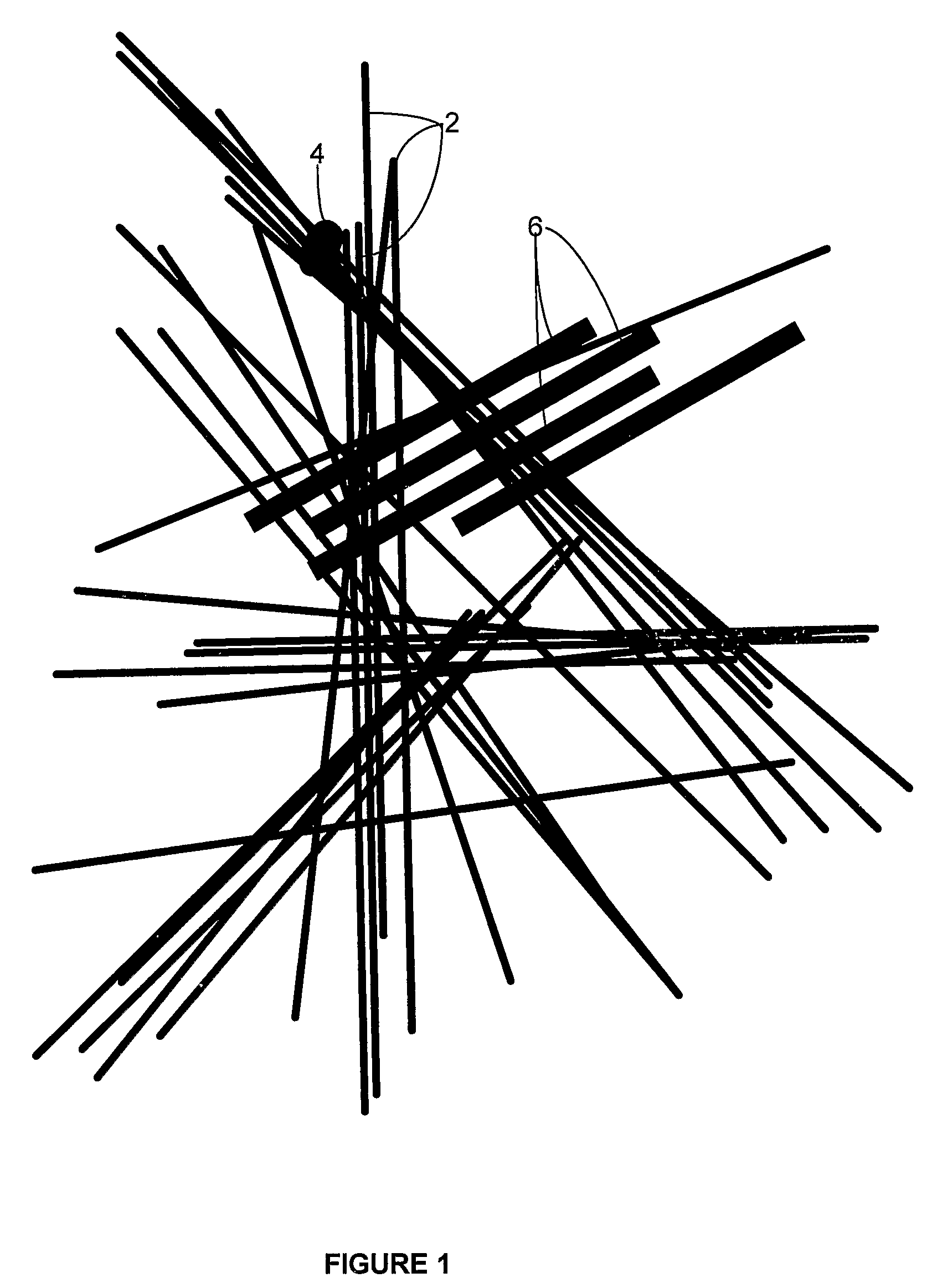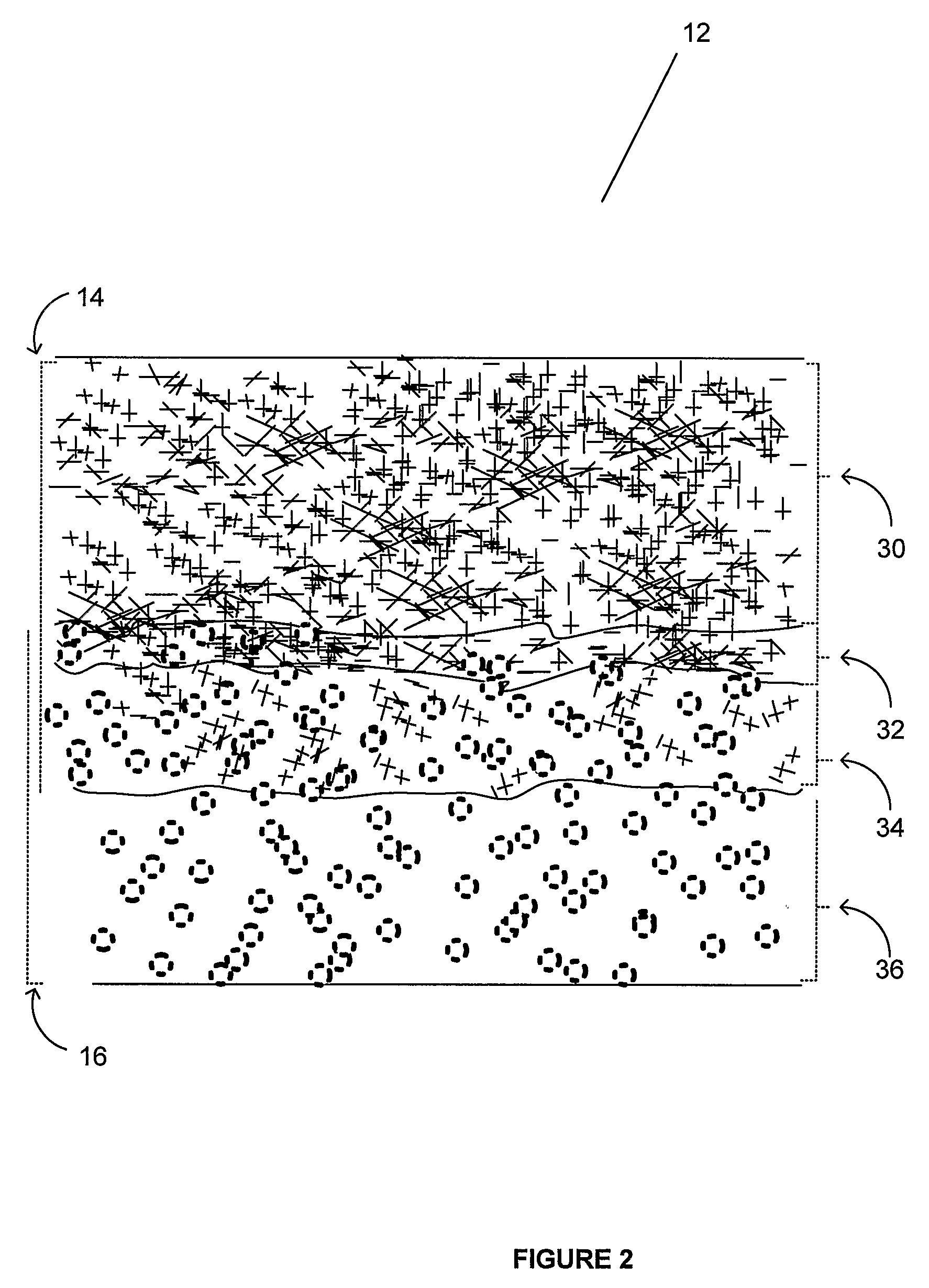Blood Separator and Method of Separating a Fluid Fraction from Whole Blood
- Summary
- Abstract
- Description
- Claims
- Application Information
AI Technical Summary
Benefits of technology
Problems solved by technology
Method used
Image
Examples
Embodiment Construction
5.1 Composite:
[0061]In one aspect, the invention provides a novel composite comprising a fibrous separation medium impregnated with a reinforcing material. The reinforcing material is a hydrophilic polyester material. In a preferred embodiment the hydrophilic polyester material is non-woven.
[0062]According to one embodiment of the invention, the composite comprises a fibrous material with a multimodal distribution of fibers having a plurality of clusters having substantially aligned short large-diameter fibers and a plurality of clusters having substantially aligned long small-diameter fibers, wherein there are fewer of the short large-diameter fibers than the long small-diameter fibers; and a reinforcing material impregnating a bottom side of the fibrous material. Surprisingly, the present inventors have found that a family of products used as storage battery separators, e.g., those manufactured by the Whatman Company, including but not limited to Whatman glass fiber papers identif...
PUM
| Property | Measurement | Unit |
|---|---|---|
| Length | aaaaa | aaaaa |
| Length | aaaaa | aaaaa |
| Length | aaaaa | aaaaa |
Abstract
Description
Claims
Application Information
 Login to View More
Login to View More - R&D
- Intellectual Property
- Life Sciences
- Materials
- Tech Scout
- Unparalleled Data Quality
- Higher Quality Content
- 60% Fewer Hallucinations
Browse by: Latest US Patents, China's latest patents, Technical Efficacy Thesaurus, Application Domain, Technology Topic, Popular Technical Reports.
© 2025 PatSnap. All rights reserved.Legal|Privacy policy|Modern Slavery Act Transparency Statement|Sitemap|About US| Contact US: help@patsnap.com



